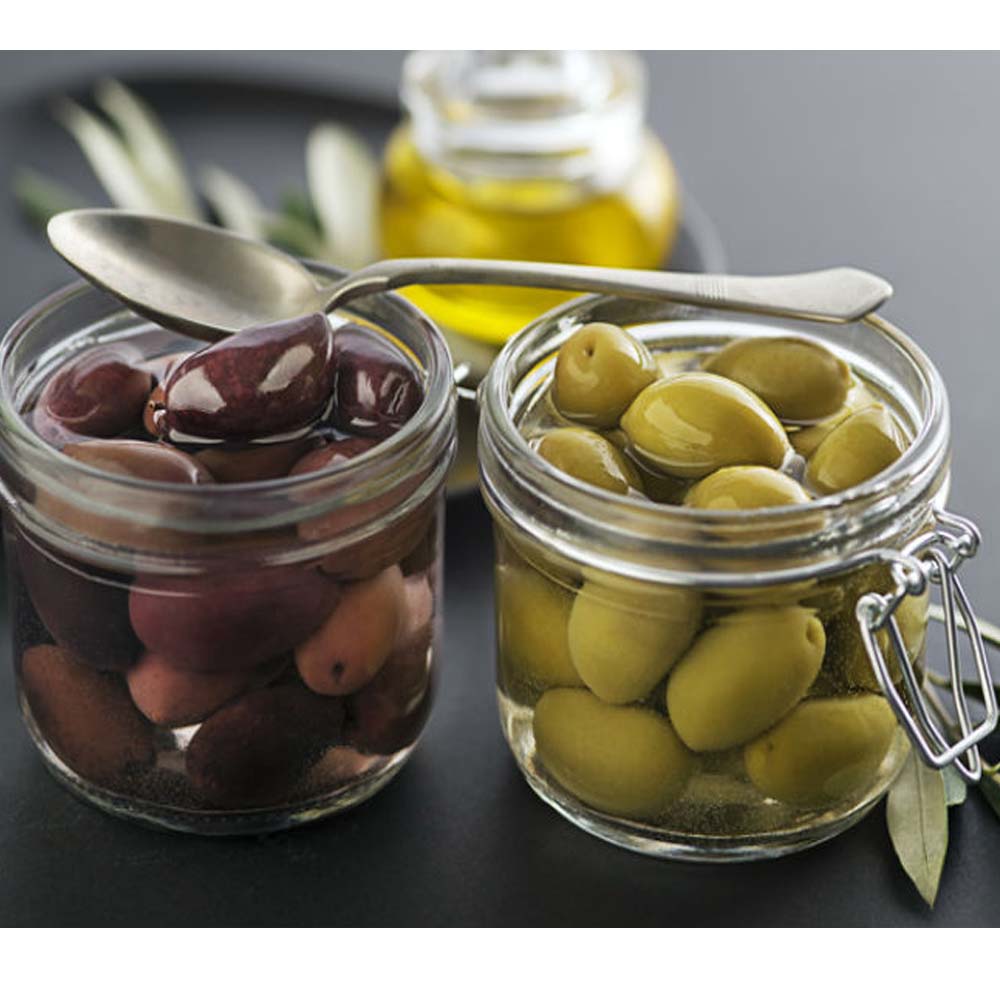

You Can Estimate the Flavor of an Olive Based on its Color
Light/Bright Green: Mild, sweet, floral
Grassy Green: Herbal, buttery
Blonde/Light Brown: Fruity, nutty
Purple/Eggplant: Smoky, fruity
Black (Brine Cured): Mild, nutty, fruity
Black (Dry/Salt Cured): Deeply fruity (licorice), aromatic, bitter
If the green olive is green, it is because it is not actually quite ripe. It is harvested just when it reaches its final size, but before the ripening comes to give it the true color of the olive. Black olive matches well with ripe olive fruit.
The green olive, an unripe fruit
From this point of view, it may seem strange that our taste buds appreciate green olives. Fruits that lack maturity generally tend to be bitter. Which is the case with green olives. To soften their bitter taste, they are soaked in a soda bath. This strong base makes it possible, by alkalization, to neutralize a large part of the bitterness of the olive. They can also undergo a brine bath - a highly concentrated salt solution - and fermentation which reduce their bitterness through the action of microorganisms.
The most common varieties are":
Kalamata: These brine-cured, greenish-black olives have a pungent, lingering flavor. Hailing from Greece, they’re a workhorse in cooking. Try them in recipes like salads, pasta tosses, stews, and olive tapenade.
Thasos: Also from Greece, these wrinkly-skinned, salt-cured black olives offer a somewhat mellow, woodsy flavor. Try serving them drizzled with olive oil and sprinkled with some fresh or crushed dried oregano.
Arbequina: These brine-cured, slightly bitter olives originally hail from Spain. Their colors go beyond the usual olive green; in fact, you might find them in hues from pinkish-brown to burnt orange, making them a striking addition to a mix of appetizer olives.
Nyons: Olive connoisseurs prize these tender, slightly bitter, lightly wrinkled black olives, which are grown in and around the city of Nyons, France. Though they can be hard to find—and a little pricey—their juicy, soft flesh and lightly sweet and fruity flavor make them worth the hunt.
Niçoise: Though these French black olives are mini in size, they’re mighty in flavor. Juicy but not oily, the South-of-France favorites are a favorite in Provençal cooking. Try them in Salad Niçoise or in Pissaladiere, the famed onion-and-olive tart of the region.
Picholine: This French gem is the quintessential olive-green olive! It’s brine-cured and meaty, with a slightly citrusy flavor and crisp, crunchy texture. Try these in an olive tapenade recipe that calls for a mix of both green and black olives.
Cerignola: Once you taste these big green brine-cured Italian olives, you’ll suddenly remember that yes—olives are a fruit! Their mild lemon and apple flavor makes them a great contrast to more pungent green and black olives. When used to make tapenade, they difficult to pit. From https://www.bhg.com/





